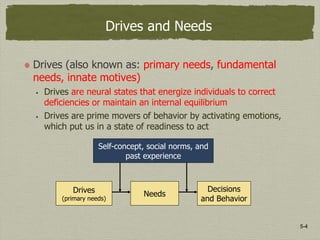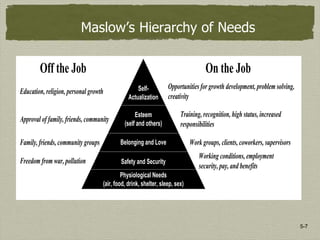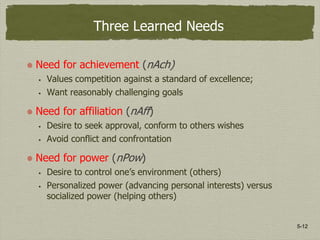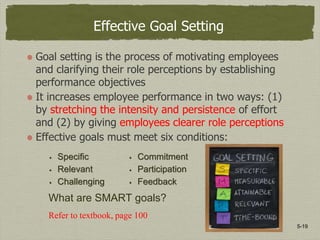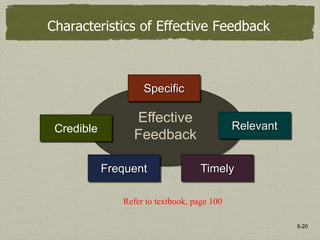The document discusses various theories of employee motivation. It begins by describing how the general manager of Sarova Panafric Hotel motivates employees through praise and recognition. It then covers Abraham Maslow's hierarchy of needs theory and its evaluation. Next, it discusses David McClelland's learned needs theory and Clayton Alderfer's ERG theory. The document also summarizes expectancy theory, goal setting theory, equity theory, job characteristics model, and the importance of job design and empowerment for motivation.



